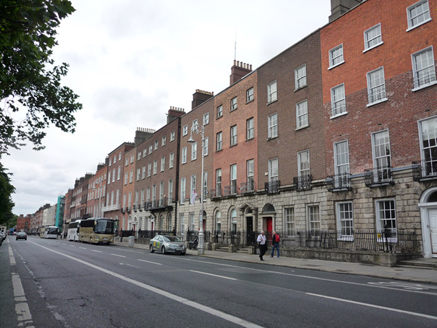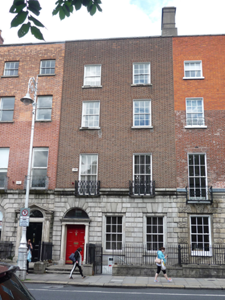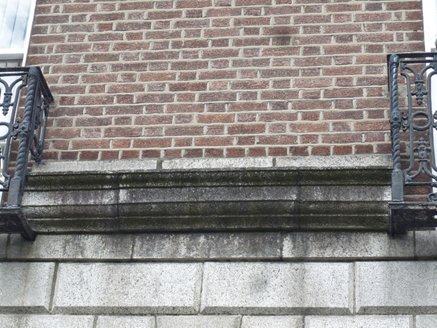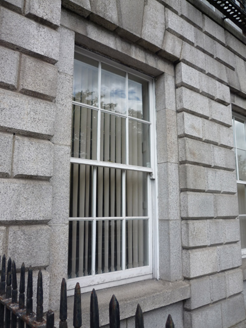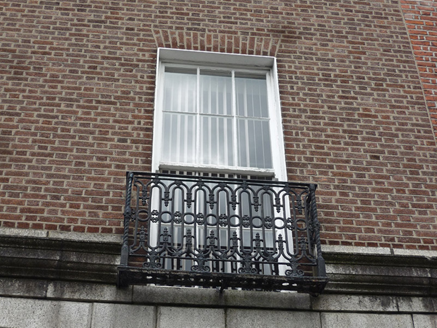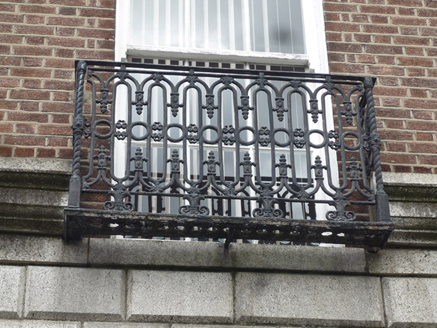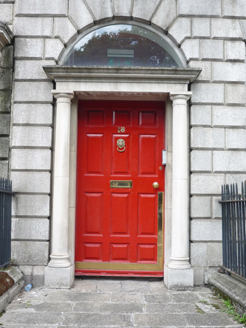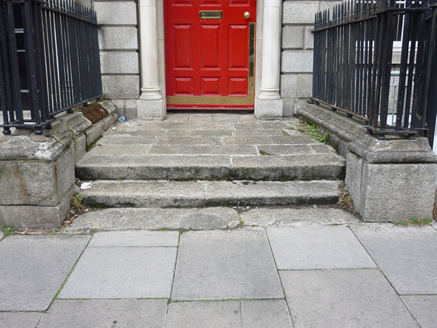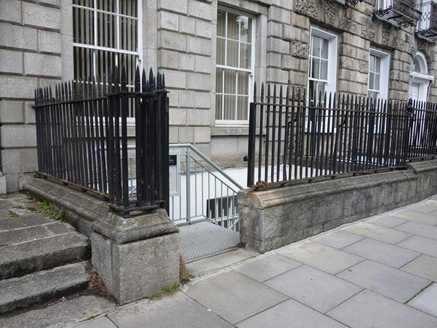Survey Data
Reg No
50100365
Rating
Regional
Categories of Special Interest
Architectural, Artistic
Original Use
House
In Use As
Office
Date
1760 - 1770
Coordinates
316722, 233650
Date Recorded
29/07/2016
Date Updated
--/--/--
Description
Attached two-bay four-storey former house over basement, built c. 1765, having small two-storey over basement return to rear with further single-storey addition to north. Now in use as offices. M-profile pitched slate roof behind brown brick parapet with granite coping; lean-to roof to return and pitched roof to addition. Rendered chimneystacks to east party wall with clay pots, and concealed rainwater goods. Flemish bond brown brick walls over granite stringcourse above first floor sill level, channelled rusticated granite facing to ground floor with splayed granite plinth and painted ruled-and-lined rendered walls to basement; rendered walls to rear, return and addition. Square-headed window openings, diminishing in height to upper levels, with painted rendered reveals, granite sills and six-over-six pane timber sliding sash windows throughout front facade. Decorative cast-iron balconettes to first floor and wrought-iron grilles to basement. Apparently timber sash windows to rear, two-over-two pane to top floor, one-over-one pane to ground floor and six-over-six pane to middle floors. Recessed round-headed entrance doorway having Portland stone doorcase with Doric columns and plain entablature, plain fanlight and twelve-panel timber door with brass furniture. Granite platform with two granite steps. Wrought-iron railings enclosing basement area with decorative cast-iron corner post on moulded granite plinth wall. Replacement dog-leg metal staircase leading to half-landing to basement entrance, latter with timber panelled door. Interior stated by Casey to have 'pretty cornices' to first floor rooms. Yard to rear of plot, with flat-roofed building further back with forecourt and rendered wall to boundary.
Appraisal
Built for Ralph Ward and completed c. 1765. The otherwise restrained brick façade of the building is enlivened by a Doric doorcase, a rusticated granite ground floor and by decorative railings and window balconettes. Rocco cornices to the first floor rooms. The building makes a strong contribution to the early character and significance of Merrion Square. It was built as part of the original development. Laid out as part of the Fitzwilliam Estate, the square is one of the best-preserved Georgian streetscapes in Ireland. The north, east and south sides of the square are lined with terraced houses of eighteenth and nineteenth-century date, while the west side is terminated by the garden front of Leinster House. The houses maintain a relatively uniform building height and design, attributed to standards promoted in Fitzwilliam's leases. Individuality was introduced through the design of doorcases, ironwork and interior decorative schemes.
